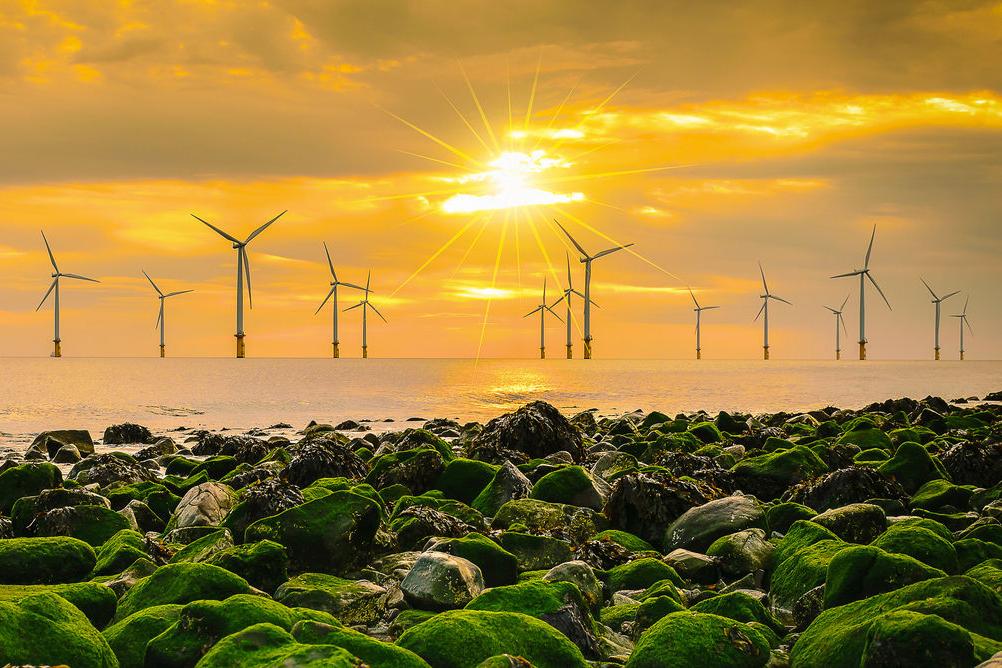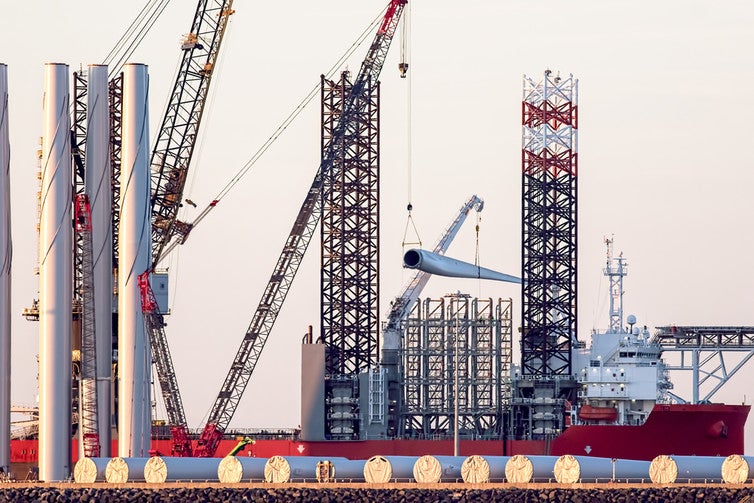Wind farms: Britain's offshore boom is concentrating power in the hands of a few very large developers
The level of investment needed to build an offshore wind farm is enormous. This reduces the potential for new entrants into the market, and excludes all the new investors who had begun to put their money into smaller scale, onshore projects

Your support helps us to tell the story
From reproductive rights to climate change to Big Tech, The Independent is on the ground when the story is developing. Whether it's investigating the financials of Elon Musk's pro-Trump PAC or producing our latest documentary, 'The A Word', which shines a light on the American women fighting for reproductive rights, we know how important it is to parse out the facts from the messaging.
At such a critical moment in US history, we need reporters on the ground. Your donation allows us to keep sending journalists to speak to both sides of the story.
The Independent is trusted by Americans across the entire political spectrum. And unlike many other quality news outlets, we choose not to lock Americans out of our reporting and analysis with paywalls. We believe quality journalism should be available to everyone, paid for by those who can afford it.
Your support makes all the difference.The price of offshore wind continues to fall dramatically. The Government’s latest round of contracts for renewable generation have just been announced, and they show the costs of subsidies have halved in just two years. Cheap wind power is a great source of low-carbon electricity, and it’s good news for politicians who may have been worried about subsidies bumping up household bills. But the scale of investment in offshore wind raises bigger, more systemic questions.
The contracts – known as contracts for difference (CFDs) – pay operators of renewable energy installations a fixed price per unit generated for 15 years, regardless of what happens to the actual wholesale price of electricity in that time. For operators, this removes a lot of uncertainty about investing in relatively new and expensive technologies such as offshore wind because the subsidy and a guaranteed market for their power mean they can be confident they will recoup their costs.
Contracts are awarded through an auction, where eligible developers bid against each other for projects being constructed in any given year. The projects with the lowest costs are awarded a contract, so ensuring the eventual cost to consumers is kept down. This is the second such auction for CFDs, and was limited to offshore wind, biomass, and energy from waste. More established technologies such as onshore wind and solar were excluded from the auction process.
The results compared with the first auction are pretty spectacular. In 2015, two offshore wind projects were awarded contracts at £120 and £114 per megawatt hour (MWh). Two and a half years later, two projects are priced at £58 per MWh, while a third is £75 per MWh. This is a 50 per cent fall in the level of subsidy, and makes offshore wind significantly cheaper than new nuclear power (the equivalent contract for Hinkley Point C is around £93 per MWh).
Offshore wind has dominated all three allocations of CFDs, with around 70 per cent of the total awarded. In part this is because it can deliver on a much larger scale than other renewables; one of the new contracts is for a huge wind farm off the Yorkshire coast which could power up to 1.4 million homes. It is also the result of the Government’s shift towards an explicit industrial strategy that intends to use the development of offshore technology to stimulate economic growth.

But the scale of this will profoundly shape the country’s electricity system. As the proposed wind farms are as large or even larger than conventional fossil fuel or nuclear stations, the UK will continue to rely on relatively few individual plants. Renewables could of course mean lots of small-scale wind and solar farms, leading to a more decentralised system. But a big offshore boom will lead to more centralisation.
The level of investment needed to build an offshore wind farm is enormous, and therefore only open to a handful of large companies with access to the necessary funds. This reduces the potential for new entrants into the market, and excludes all the new investors who had begun to put their money into smaller scale, onshore projects over the past few years.
The prices of the contracts awarded in this round are also so low that there must be the prospect that some of the projects are not actually built. This is partly because the costs of turbines and cables might not decline as quickly as expected, but is also related to Brexit. A decline in the pound means the cost of importing the necessary materials might well increase to the point where the subsidy on offer is not enough to allow investors to recoup their costs. While the impact of this might be relatively slight for a small scale, onshore project, it will be much larger for a complex, very capital-intensive wind farm built many miles out to sea. The UK could afford to lose a few smaller hilltop wind farms, but losing a massive offshore project would put a huge dent in its renewables output.
So, the decline in offshore wind costs is fantastic, and a real endorsement of a rapidly-developing technology. But the bigger picture shouldn’t be neglected here. The UK is putting a lot of eggs into one basket. Centralised generation increasingly excludes new entrants, and literally concentrates power in the hands of a few very large developers. That makes life easier for policymakers who have fewer firms to deal with, but concentration also increases the risk of collusion and, in the longer-term, will mean less innovation.
While increased generation from renewables is a desirable thing in itself, it is a real pity to be neglecting the increased levels of participation in the system which smaller scale projects offered. If Britain continues along this route, the days of community energy groups and energy co-ops may well be over.
Bridget Woodman is a course director of MSc energy policy at the University of Exeter. This article was originally published on The Conversation (www.theconversation.com)
Join our commenting forum
Join thought-provoking conversations, follow other Independent readers and see their replies
Comments